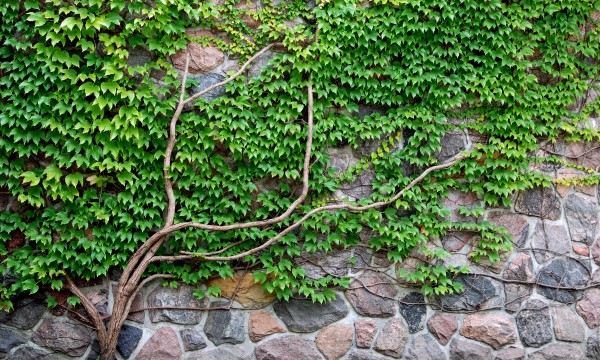Akebia is a twining perennial vine whose rampant growth makes it useful for screening out an unattractive view, covering a wall or fence, or even creating shade on a terrace. We'll cover everything you'll need to know to grow your own.
- Browse Categories
- All Tips
-
Home & Garden
- All
- Appliances
- Bathroom
- Cleaning
- Crafts
- Decorating
- Electrical
- Flooring
- Furniture
- Garage Door
- Gardening
- Green Living
- Heating
- Home Alarm Systems
- Home Maintenance
- Home Remedies
- Home Security
- Home Staging
- House Sitting
- Junk Removal
- Kitchen
- Lawn Care
- Lock Systems
- Moving
- Outdoor Living
- Pest Control
- Plumbing
- Renovation
- Roofing
- Snow Removal
- Storage
- Tools
- Tree Service
- Health
- Family
- Travel
- Auto
- More Tips
Your account is now active!

Learn all about akebia vines and how to grow them
October 9, 2015

Easily grow akebia
- Akebias can climb to nine metres (30 feet) or more, but they're also content to weave themselves over a low fence or tree stump. They ascend by coiling their stems around any vertical support.
- Akebias are remarkably unfussy. While they prefer fertile, moist, well-drained soil, they do just fine in average soils as well. And though they need sun, they can also tolerate partial shade. The only thing akebias resent is having their roots disturbed, so select a permanent site carefully.
- Set out container-grown plants in either spring or fall, and allow at least six to eight weeks for the new plants to settle in before the onset of extreme temperatures in the summer or winter.
- Young plants may need protection to survive their first winter. Spread a 10-centimetre-deep (four-inch) layer of a fluffy mulch (like dried leaves or evergreen boughs) over the root zone after the first hard freeze in fall.
- Young stems may need help to start twining. Let them grow a little and watch their natural habit to see if they coil clockwise or counterclockwise. Then, tie the stems loosely to the support with soft green twine or yarn following their inclination. If the stems can't yet reach the support, place bamboo stakes around the plant that reach the base of the support. Tie the stems onto the stakes, and they'll soon start climbing up to the support.
- Established plants often need to be pruned back to control their wandering tendencies. Pruning may be done at any time of the year, although the preferred time is after the flowers fade in the early summer. Prune only as needed to control the size of the vine and to train it so that it will expand into places where you want it to grow.
- In mild climates, an akebia that's grown out of control can be reined in if you cut it back to the ground in late winter or early spring.
- Akebia has no serious insect pests, is untroubled by diseases, and only needs fertilizer in poor soils. If foliage becomes sparse and turns light green, it's time to apply an all-purpose controlled-release fertilizer.
Enjoy the foliage and flowers
- Handsome, thick foliage is the main reason to grow akebia. Five-leaf akebia (Akebia quinata) has leaf clusters with five leaflets, each one rounded, light green, and five centimetres (two inches) long.
- A. trifoliata is similar, but the leaflets are in clusters of three and can reach 10 centimetres (four inches) long. When viewed from a distance, the vine gives the overall effect of a soft, finely textured curtain. And because five-leaf akebia performs as an evergreen or semi-evergreen in mild climates, lucky gardeners can enjoy the foliage nearly year-round.
- In spring, akebias produce attractive clusters of flowers which release a faint vanilla scent. The buds dangle like little lavender cherries, then open into male and female flowers on the same stem.
- If pollinated, akebia may produce eight-centimetre-long (3.25-inch) grayish-purple fruits that split open to reveal black seeds, but this is relatively uncommon.
Akebia is a hardy, durable vine and is quite easy to plant and maintain. It's both aesthetically attractive and functionally useful, so use this guide and grow some akebia to improve the look of your home and garden.
National advertising powered by Mediative.com. Yellow PagesTM, Walking Fingers & DesignTM, YP.caTM, Find. & DesignTM, YellowPages.caTM, Canada411TM and YP ShopwiseTM are trademarks of Yellow Pages Digital & Media Solutions Limited in Canada. All other trademarks are the property of their respective owners. Copyright © 2018 Yellow Pages Digital & Media Solutions Limited. All Rights Reserved.
More Tips
The material on this website is provided for entertainment, informational and educational purposes only and should never act as a substitute to the advice of an applicable professional. Use of this website is subject to our terms of use and privacy policy.







